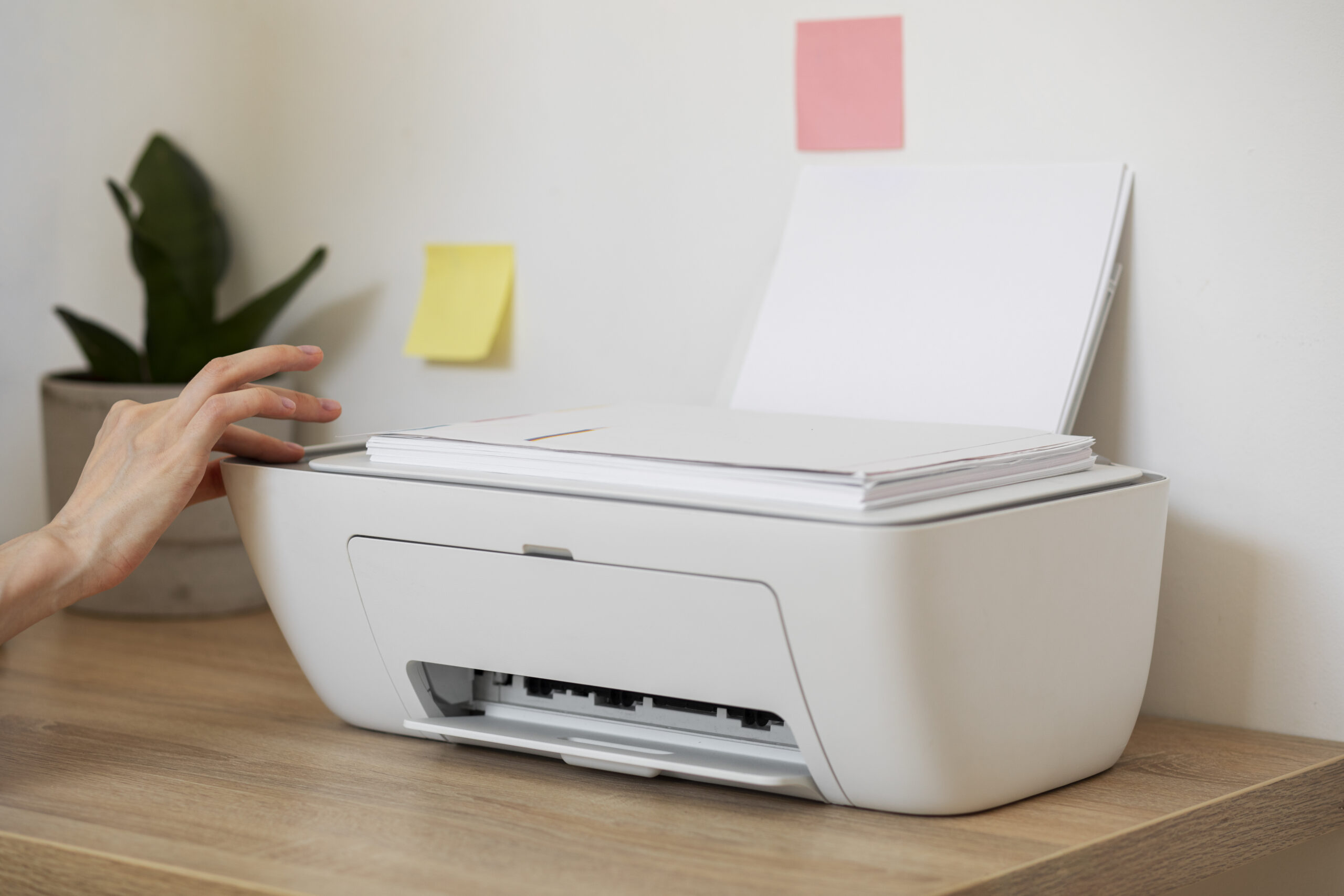Fix Lines, Streaks & Faded Prints — Deep Cleaning, Calibration & Reliable Results

Lines, streaks, and faded prints are the most common quality complaints at home and in small offices. They waste paper, cost extra ink, and create unprofessional documents. The good news is that most causes are simple: dirty rollers, clogged nozzles, wrong presets, or poor paper. This long-form guide (5,000+ words) will cover every step you can take to restore clean results, from quick daily habits to advanced calibration. It is brand-neutral and written in UK English, so you can follow it on almost any device safely.
Why do lines, streaks, and faded prints appear?
Understanding the root cause prevents wasted effort. Lines can be vertical or horizontal: vertical often comes from a dirty roller or developer component, while horizontal banding often indicates nozzle clogs or alignment issues. Streaks may result from residual toner, damp paper, or curled stock dragging against guides. Fading can indicate low density settings, worn cartridges, or blocked airflow in a laser fuser. Here are the most common triggers:
- Dirty rollers or transfer belt leaving repeating marks at regular intervals.
- Clogged ink nozzles producing missing lines or pale areas.
- Low density setting applied for economy but misused on final prints.
- Worn toner drum producing shadows, ghosts, or faded areas.
- Damp, thin, or curled paper interacting badly with duplex paths.
- Driver misconfiguration sending heavy colour management or wrong media type.
Quick wins (try these first)
Before diving into long cleaning routines, check these three quick wins that often restore quality immediately:
- Swap the paper: Load a fresh, sealed stack of 90–100 gsm stock with curl facing down.
- Switch the preset: Move from “Plain” to “Thick/Heavy” for reports or “Glossy” for photos.
- Run a single cleaning cycle: For inkjet, one nozzle clean is usually enough to clear a partial blockage.
Method 1 — Clean the rollers and paper path
Rollers pick, feed, and transfer sheets. Dust, lint, or toner on their surface produces repeated dark streaks at the same spacing as the roller circumference. Power the device off, open the path, and wipe rollers with a dry, lint-free cloth. Rotate slowly to cover the whole circumference. Avoid alcohol unless your manual permits it. While open, check for scraps of torn paper that could mark every page.
| Roller | Function | Fault symptom | Fix |
|---|---|---|---|
| Pick roller | Grabs first sheet | Double-feeds, chewed edge | Wipe surface; reduce stack |
| Feed roller | Moves sheet mid-path | Vertical streaks | Wipe lint; rotate clean |
| Transfer roller/belt | Applies toner/ink | Repeating ghost marks | Clean gently; replace if worn |
Method 2 — Run a nozzle clean and head alignment (inkjet)
Inkjet nozzles are tiny and clog easily with dried ink. Use the built-in maintenance menu to run a Nozzle Check, then a Cleaning Cycle. Print the test pattern and confirm all lines are continuous. If banding remains, perform a Head Alignment to recalibrate droplet placement. Wait at least 5 minutes between cleans; running too many cycles wastes ink and risks saturating the maintenance pad.
Method 3 — Adjust density and quality presets
Economy or draft settings reduce density to save ink, but they also produce faded pages. Check the driver’s Print Quality menu. For text, normal quality is sufficient. For final reports or images, increase to high. For lasers, check “Density” or “Toner Save” and adjust upward if set too low.
Method 4 — Replace or reseat the cartridge/drum
Sometimes the problem is mechanical wear. Ink cartridges may dry; toner drums wear after thousands of cycles. Remove, shake gently side-to-side to redistribute, and reseat. If no improvement, replacement may be needed. Check the page count against rated life.
Method 5 — Fix paper and humidity issues
Paper absorbs moisture, curls, and drags through rollers unevenly. Store reams sealed. If sheets feel damp, switch immediately. For curled stock, load with curl facing down. Prefer 90–100 gsm for duplex reports. Avoid cheap 70–75 gsm that causes show-through and jams.
Method 6 — Calibrate colour and greyscale
Banding across fills may be calibration drift. Use the driver’s Colour Calibration or Greyscale Balance. This aligns printhead movement, droplet timing, and toner density. On inkjet, the test pattern should show consistent solid blocks; on laser, colours should align without shadow.

Continue to Part 2 for Methods 7–12, preventive care, troubleshooting tables, and FAQs.
Method 7 — Deep clean platen, encoder strip, and optical sensors (inkjet focus)
Persistent fine lines or erratic banding on inkjets can come from contamination along the carriage path. The platen is the flat surface under the paper; the encoder strip is a thin translucent ribbon behind the carriage that helps the printer measure exact head position. If either is dirty, droplet placement wobbles and yields faint ladders or zig-zag artefacts across fills.
- Power off and unplug. Open the top cover and move the carriage gently to the centre if the device allows manual movement.
- Platen check. Shine a torch at a low angle. Remove paper lint with a dry, lint-free cloth. Do not scrape any foams or sponge areas.
- Encoder strip. If present, it looks like a thin clear tape with fine markings. Lightly wipe with a barely damp, lint-free cloth (clean water only). Hold both ends to keep tension and avoid kinks.
- Paper sensor windows. Blow away visible dust; avoid liquids near sensors.
- Test. Power up and run a nozzle check and an alignment to confirm stability.
Method 8 — Restore fusing & developer consistency (laser focus)
Laser streaks often come from the imaging process rather than the paper path. Developer units, drums, and fusers age at different rates. If you see repeating artefacts at consistent intervals down the page, match the repeat distance to a component.
| Repeat distance (A4) | Likely component | Action |
|---|---|---|
| ~75–95 mm | Fuser roller | Run fuser clean mode; choose Heavy/Cardstock; check fuser life |
| ~37–48 mm | OPC drum | Remove cartridge; gently rotate; replace if scratched/at end of life |
| ~54–63 mm | Transfer roller/belt | Clean carefully; replace if contaminated |
- Run built-in cleaning cycles. Many lasers expose a “fuser clean” or “drum refresh” in maintenance menus.
- Increase media weight preset. Heavier setting increases dwell, improving fusing on dense coverage.
- Inspect consumables. If the repeat distance matches a drum or fuser, plan a replacement.

Method 9 — Fix the software pipeline: export, colour management & PDFs
Dirty input yields dirty output. If your file is low-resolution, has flattened text, or uses heavy background textures, even a perfect printer will produce banding, noise, and smudge risk. Optimise before hitting print.
- Export to PDF with embedded fonts. Keep text as vectors; avoid rasterising pages.
- Remove background textures and drop shadows. Use white space and thin rules instead.
- Charts: Use labelled lines/patterns; limit fills to light tints.
- Images: Resize to placement width; 200–300 dpi; tight crop.
- Colour management: If you see washed colours, try the OS generic/IPP driver path rather than complex vendor colour pipelines for office docs.
Method 10 — Update firmware & perform a clean driver reinstall (minimal stack)
Drivers accrue baggage. A minimal, clean reinstall often eliminates odd density and streak issues caused by stale settings.
- Remove the device from Windows/macOS.
- Install via IPP/AirPrint or generic class driver unless you require specific finishing.
- Update device firmware from the admin page/panel while idle.
- Recreate presets (Everyday, Duplex-Thick, Photo) from scratch.
Method 11 — Use the correct path: manual/bypass tray to prevent scuff & skew
Thick, coated, or textured media benefits from the straightest possible path. The manual/bypass tray feeds flatter with gentler turns, which avoids edge scuffing and trailing-edge smears.
- Set guides snug, not tight. Over-tight guides bow the stack and create rub.
- Choose the matching preset (Heavy/Cardstock, Labels, Envelopes).
- Feed small batches and check each result before committing to a long run.

Method 12 — Environment & power quality: keep conditions steady
Quality drifts when conditions swing. Humidity softens fibres, heat curls sheets, and poor power can cause partial fusing and misreads.
- Place well: Avoid radiators, windows, and direct sun. Keep on a stable, level surface.
- Humidity control: Store reams sealed; move open stacks to a resealable bag.
- Power: Use a surge-protected outlet; avoid long daisy-chains and cheap extenders.
- Airflow (laser): Ensure vents are clear to keep fuser temperature consistent.
Diagnostics worksheet (identify, test, confirm)
| Observation | Hypothesis | One-step test | Pass/Fail next step |
|---|---|---|---|
| Vertical dark line | Dirty roller/drum line | Print blank page; does line repeat? | Clean rollers → if repeat interval constant, inspect drum |
| Horizontal banding on fills | Nozzle clog / alignment | Nozzle check & alignment | Quality ↑; if persists, clean once more |
| Grey rub on reverse | Poor fusing on heavy coverage | Switch to Heavy/Cardstock | If still bad, fuser clean mode or service |
| Smear at trailing edge duplex | Curl contacting guides | Use 90–100 gsm; Duplex-Thick | Lower density; reduce edge solids |
| Images look soft | Low-res export / scaling | Export PDF 300 dpi assets | Swap images to resized PNG/JPG |
Preventive care that keeps prints clean
- Weekly: Print a 1-page text file to keep inkjets flowing and rollers active.
- Monthly: Wipe accessible rollers; empty dust; check presets still saved.
- Quarterly: Firmware update; template review; paper stock rotation.
- Always: Keep a sealed ream on hand; store open stacks in a bag; label trays by stock.

Troubleshooting matrices
By device type
| Inkjet | Laser |
|---|---|
|
|
By symptom pattern
| Pattern | Cause | Fix |
|---|---|---|
| Repeats every ~40–60 mm | Drum defect | Clean/replace drum unit |
| Repeats every ~80–100 mm | Fuser blemish | Fuser clean mode; reduce heavy solids; replace if worn |
| Alternating light/dark bands | Inkjet nozzle/align issue | Nozzle clean; head alignment; quality ↑ |
| Smear near fold/edge | Curl + duplex flip | Heavier stock; Duplex-Thick; adjust layout |

FAQs
Why do lines appear only on photos but not on text pages?
Large flat tints expose small alignment or density issues more than text. Use Photo/Glossy or higher quality, align heads, and ensure images are exported at 200–300 dpi.
My prints are pale even with new cartridges. What now?
Check the driver for Draft/Toner Save, run a single clean, and confirm the paper preset. On lasers, raise density one step and run a fuser clean if rub marks appear.
How do I know if the drum or the fuser is the issue?
Measure the distance between repeating defects: shorter repeats usually indicate the drum; longer repeats point to the fuser. Match to the table above and act accordingly.
Should I use alcohol to clean rollers?
Avoid it unless your manual says otherwise. Alcohol can harden rubber. Start with a dry, lint-free cloth; if needed, use clean water very sparingly.
Is high-quality mode always safer for lines and banding?
It helps, but it’s not a cure. Fix the cause first: run nozzle clean/alignment (inkjet) or fuser/drum checks (laser). Then use a higher quality for image-heavy pages.
Can thin paper cause faded or streaky results?
Yes. Thin, damp paper curls and rubs guides, creating marks and uneven contact. Move to 90–100 gsm, condition the stack, and load curl-down.
Guide Axis provides brand-neutral education only. No remote access, repairs, or warranty services.
